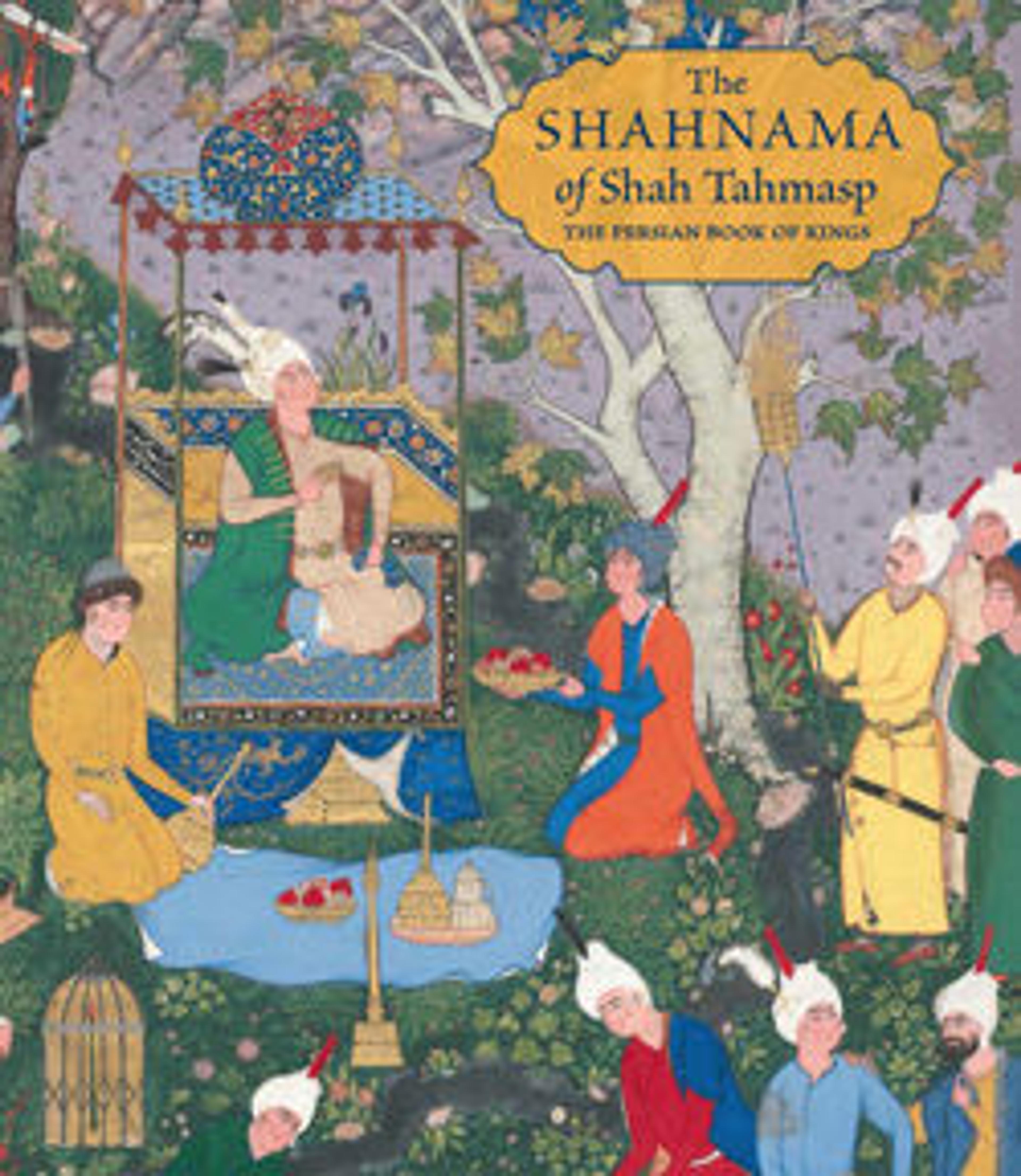"Siyavush Stands Accused by Sudaba before Kai Kavus", Folio 163v from the Shahnama (Book of Kings) of Shah Tahmasp
Kai Kavus marries a second wife, a Turanian princess, who gives birth to a son, Siyavush. Because the boy has an ill-omened horoscope, Kai Kavus sends him to be reared by Rustam in Zabulistan, but when he comes of age, he returns to his father's court. Soon afterward his mother dies, and Kai Kavus recommends that Siyavush seek solace with his first wife, Sudaba. She falls in love with Siyavush, and when he spurns her advances, she claims that he tried to rape her. Kai Kavus questions his wife and son and determines the innocence of Siyavush, but decides the matter should be kept secret.
Artwork Details
- Title:"Siyavush Stands Accused by Sudaba before Kai Kavus", Folio 163v from the Shahnama (Book of Kings) of Shah Tahmasp
- Author:Abu'l Qasim Firdausi (Iranian, Paj ca. 940/41–1020 Tus)
- Artist:Painting attributed to 'Abd al-Vahhab (Iranian)
- Workshop director:Mir Musavvir (Iranian, active ca. 1525–55)
- Date:ca. 1530–35
- Geography:Made in Iran, Tabriz
- Medium:Opaque watercolor, ink, silver, and gold on paper
- Dimensions:Painting:
H. 11 in. (27.9 cm)
W. 7 3/8 in. (18.7 cm)
Entire Page:
H. 18 5/8 in. (47.3 cm)
W. 12 5/8 in. (32.1 cm) - Classification:Codices
- Credit Line:Gift of Arthur A. Houghton Jr., 1970
- Object Number:1970.301.23
- Curatorial Department: Islamic Art
More Artwork
Research Resources
The Met provides unparalleled resources for research and welcomes an international community of students and scholars. The Met's Open Access API is where creators and researchers can connect to the The Met collection. Open Access data and public domain images are available for unrestricted commercial and noncommercial use without permission or fee.
To request images under copyright and other restrictions, please use this Image Request form.
Feedback
We continue to research and examine historical and cultural context for objects in The Met collection. If you have comments or questions about this object record, please contact us using the form below. The Museum looks forward to receiving your comments.
